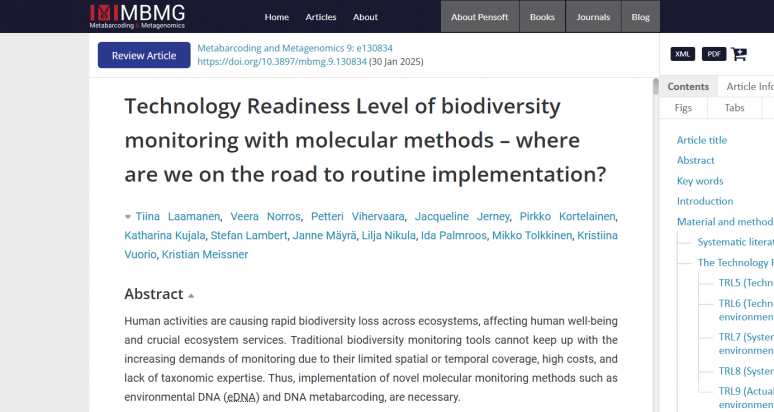
Novel biodiversity monitoring methods and their TRLs: an OBSGESSION publication
“National and international cooperation is crucial for establishing common standards, ensuring reliable and comparable results and expediting the routine use of molecular methods in biodiversity monitoring.” - Laamanen, et al. (2025).
Human activities remain the main driver of rapid biodiversity loss, disrupting ecosystem balance and negatively affecting human well-being.
A recent article, “Technology Readiness Level of biodiversity monitoring with molecular methods – where are we on the road to routine implementation?” , supported by OBSGESSION, was published earlier this year in the journal Metabarcoding & Metagenomics. Among the authors are several OBSGESSION consortium members - Tiina Laamanen, Veera Norros, Janne Mäyrä and Petteri Vihervaara.
The study examines the Technology Readiness Levels (TRLs) of novel molecular monitoring methods such as environmental DNA (eDNA) and DNA metabarcoding. Traditional biodiversity monitoring tools often fall short of current ecological research needs due to limited spatial or temporal coverage, high costs, and a shortage of taxonomic expertise. As an alternative, molecular monitoring methods offer significant benefits for biodiversity monitoring and environmental assessment, including:
-
high sensitivity and accuracy
-
non-invasive sampling
-
broad taxonomic range
-
cost and time efficiency
However, the diversity of approaches creates a poor playing field for comparing independently conducted studies. The authors therefore emphasise the urgent need for standardised assessments.
Read the full article here.